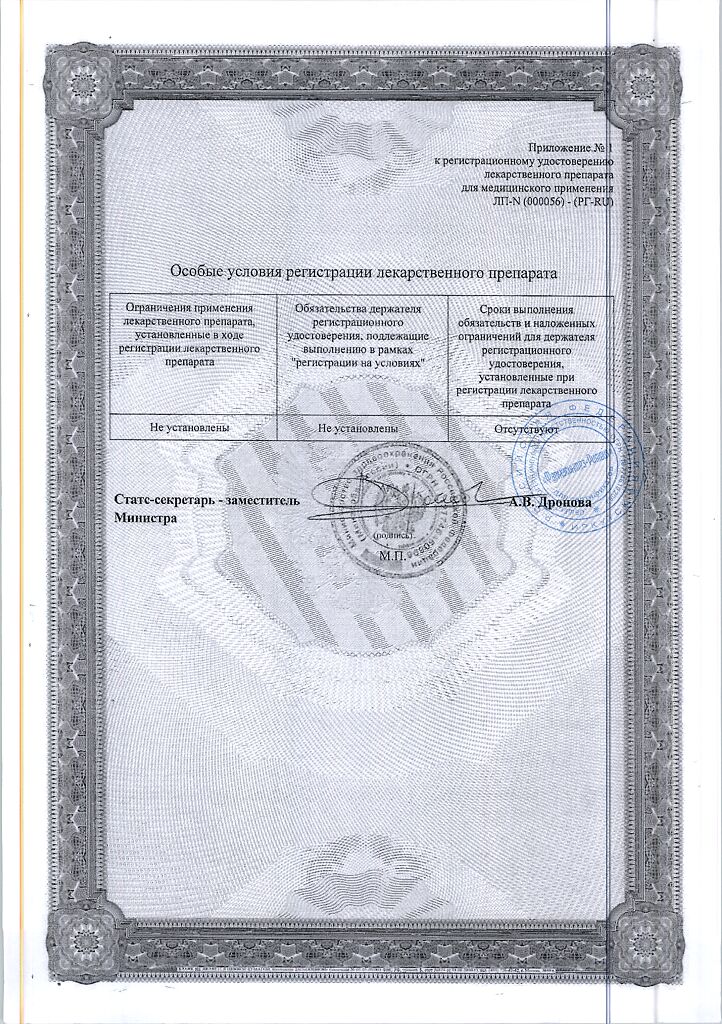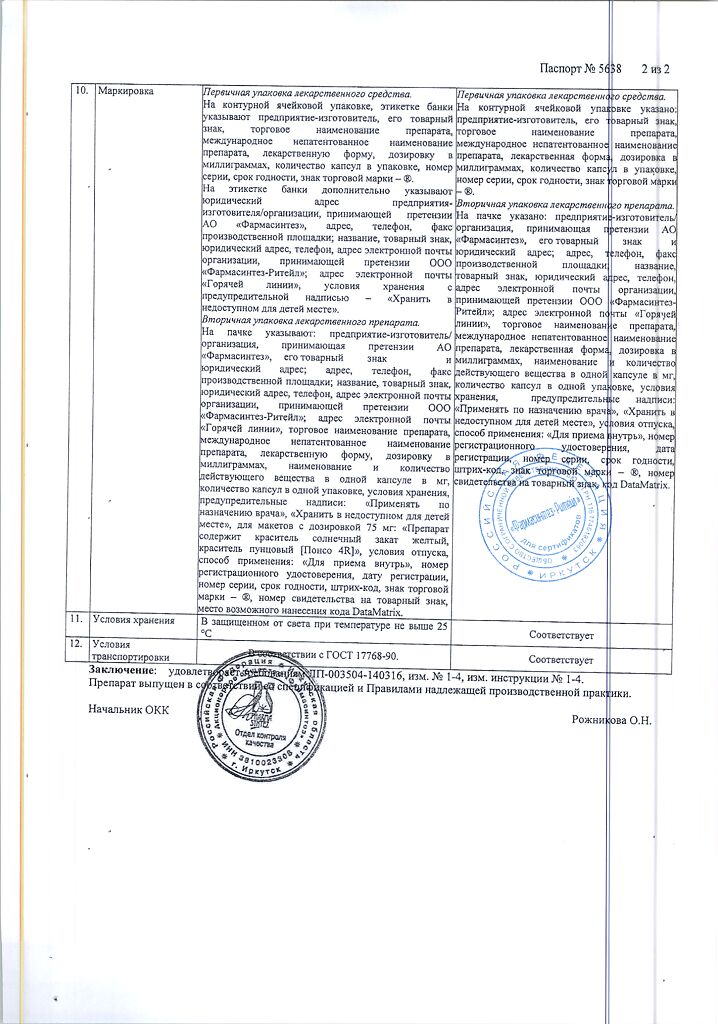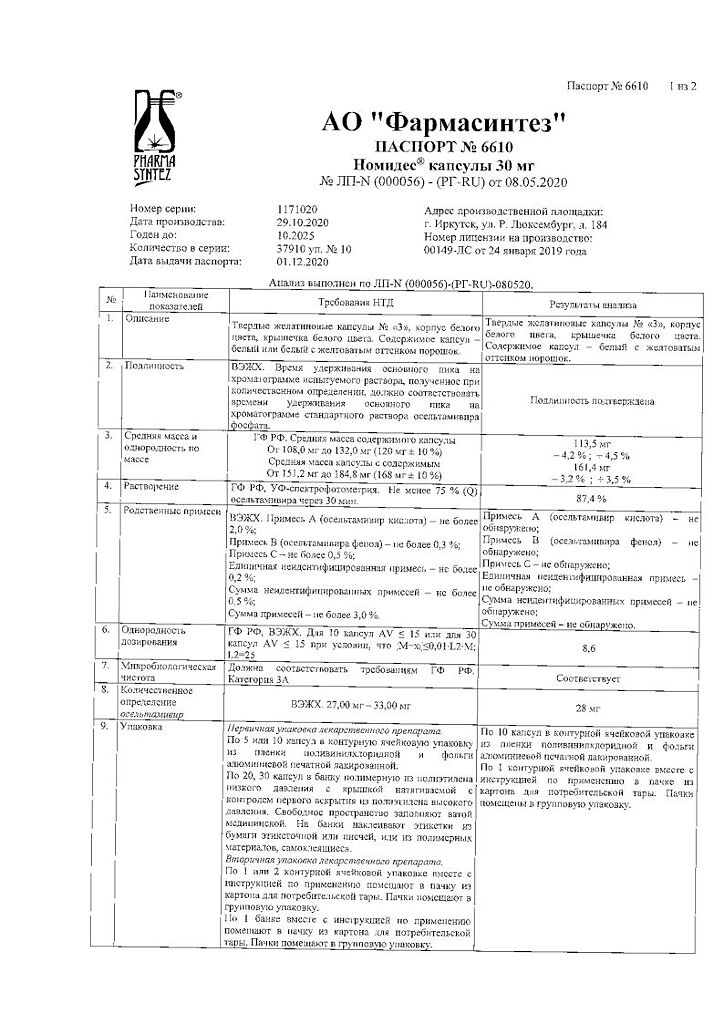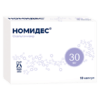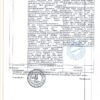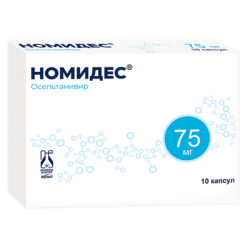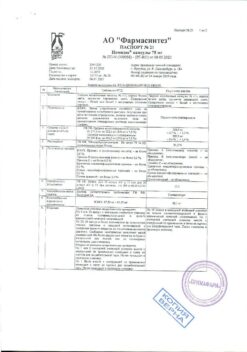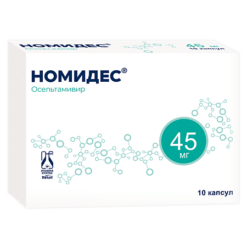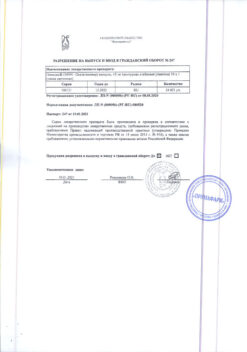No products in the cart.
Description

PHARMACODINAMICS
Mechanism of action
. Antiviral drug, oseltamivir phosphate is a prodrug, its active metabolite (oseltamivir carboxylate, OC) is an effective and selective inhibitor of influenza virus neuraminidase type A and B – the enzyme that catalyzes the release of newly formed viral particles from infected cells, their penetration into uninfected respiratory epithelial cells and further spread of the virus in the body. Inhibits influenza virus growth in vitro and suppresses virus replication and pathogenicity in vivo, reduces the release of influenza A and B viruses from the body. Studies of clinical influenza virus isolates have shown that the concentration of OC needed to inhibit neuraminidase by 50% (IC50) is 0.1-1.3 nM for influenza A virus and 2.6 nM for influenza B virus. The median IC50 value for influenza B virus is slightly higher at 8.5 nM.
Clinical efficacy
In the studies conducted, oseltamivir had no effect on influenza antibody formation, including antibody production in response to administration of inactivated influenza vaccine.
Studies of natural influenza infection
In clinical studies conducted during seasonal influenza infection, patients were started on oseltamivir no later than 40 h after the first symptoms of influenza infection appeared. 97% of patients were infected with influenza A virus and 3% of patients were infected with influenza B virus.
Oseltamivir significantly shortened the period of clinical manifestations of influenza infection (by 32 hours).
In patients with a confirmed diagnosis of influenza who took oseltamivir, the severity of illness, expressed as the area under the curve for the total index of symptoms, was 38% lower compared to patients who received placebo. Moreover, in young patients without comorbidities, oseltamivir reduced by about 50% the incidence of flu complications requiring antibiotics (bronchitis, pneumonia, sinusitis, otitis media). There was clear evidence of efficacy of the drug with respect to secondary efficacy criteria relating to antiviral activity: oseltamivir caused both a shortening of the time of virus release from the body and a reduction in the area under the “viral titers-time” curve.
The data obtained in a study of oseltamivir therapy in elderly and senile patients show that administration of oseltamivir at a dose of 75 mg twice daily for 5 days was accompanied by a clinically significant reduction in the median period of clinical manifestations of influenza infection, similar to that in adult patients of younger age, but differences did not reach statistical significance. In another study, influenza patients older than 13 years with concomitant chronic cardiovascular and/or respiratory diseases received oseltamivir in the same dosing regimen or placebo. There were no differences in the median period before reduction of clinical manifestations of influenza infection in the oseltamivir and placebo groups, but the period of fever increase when receiving oseltamivir was about 1 day. The proportion of patients who excreted the virus on days 2 and 4 became significantly less. The safety profile of oseltamivir in at-risk patients did not differ from that in the general adult patient population.
Treatment of influenza in children
A double-blind, placebo-controlled study was conducted in children aged 1-12 years (mean age 5.3 years) who had fever (˃37.8°C) and one of the respiratory system symptoms (cough or rhinitis) during a period of flu virus circulation in the population. Sixty-seven percent of patients were infected with influenza A virus and 33% of patients were infected with influenza B virus. Oseltamivir (when taken no later than 48 hours after the onset of the first flu infection symptoms) significantly reduced the duration of illness (by 35.8 hours) compared to placebo. The duration of the disease was defined as the time until the cough, nasal congestion, disappearance of fever, and return to normal activity. The incidence of acute otitis media was reduced by 40% in the children treated with oseltamivir compared to the placebo group. Recovery and return to normal activity occurred almost 2 days earlier in children who received oseltamivir compared to the placebo group.
Another study involved children aged 6-12 years with bronchial asthma; 53.6% of patients had influenza infection confirmed serologically and/or in culture. The median duration of illness in the group of patients receiving oseltamivir did not decrease significantly. But by the last 6 days of therapy with oseltamivir, forced expiratory volume in 1 second (FEF1) increased by 10.8% compared with 4.7% in patients receiving placebo (p=0.0148).
The prevention of influenza in adults and adolescents
The preventive efficacy of oseltamivir in natural influenza A and B infection has been proven in 3 separate phase III clinical trials. About 1% of patients became ill with influenza while taking oseltamivir. Oseltamivir also significantly reduced the frequency of virus excretion and prevented transmission from one family member to another.
Adults and adolescents who were in contact with a sick family member started taking oseltamivir within two days of the family member’s flu symptoms and continued it for 7 days, which significantly reduced the incidence of flu in contactees by 92%.
In unvaccinated and generally healthy adults aged 18-65 years, taking oseltamivir during an influenza epidemic significantly reduced the incidence of influenza (by 76%). Patients took the drug for 42 days.
In elderly and seniors in nursing homes, 80% of whom were vaccinated before the season when the study was conducted, oseltamivir significantly reduced the incidence of influenza by 92%. In the same study oseltamivir significantly (86%) reduced the incidence of flu complications: bronchitis, pneumonia, sinusitis. Patients took the drug for 42 days.
Preventing influenza in children
The preventive efficacy of oseltamivir in naturally occurring influenza infection was demonstrated in a study in children from 1 to 12 years after contact with a sick family member or someone in the regular environment. The primary efficacy parameter in this study was the rate of laboratory-confirmed influenza infection. In the study, children who received oseltamivir (oral suspension powder) at a dose of 30 to 75 mg once daily for 10 days and who did not excrete the virus at baseline had a reduced rate of laboratory-confirmed influenza to 4% (2/47) compared with 21% (15/70) in the placebo group.
Influenza prevention in immunocompromised persons
Prevention of influenza in immunocompromised persons
. In immunocompromised individuals with seasonal influenza infection and no viral release at baseline, prophylactic use of oseltamivir resulted in a reduction in the incidence of laboratory-confirmed influenza infection with clinical symptoms to 0.4% (1/232) compared with 3% (7/231) in the placebo group. Laboratory-confirmed influenza infection with clinical symptoms was diagnosed in the presence of oral fever above 37.2 °C, cough and/or acute rhinitis (all reported on the same day while taking the drug/placebo), and a positive reverse-transcriptase polymerase chain reaction for influenza virus RNA.
Resistance
Clinical studies
The risk of influenza viruses with reduced sensitivity or resistance to the drug has been studied in clinical trials. In all patients who were carriers of OC-resistant virus, the carriage was temporary, did not affect the elimination of the virus and did not cause deterioration of the clinical condition.
Patient population | Patients with resistance mutations | ||
Phenotyping* | Phenotyping* | ||
Adults and adolescents | 4/1245 (0.32%) | 5/1245 (0.4%) | |
Children (ages 1-12) | 19/464 (4.1%) | 25/464 (5.4%) | |
| Manufacturer | Pharmasintez JSC, Russia |
|---|---|
| Medication form | capsules |
| Brand | Pharmasintez JSC |
Other forms…
Related products
Buy Nomides, 30 mg capsules 10 pcs with delivery to USA, UK, Europe and over 120 other countries.


